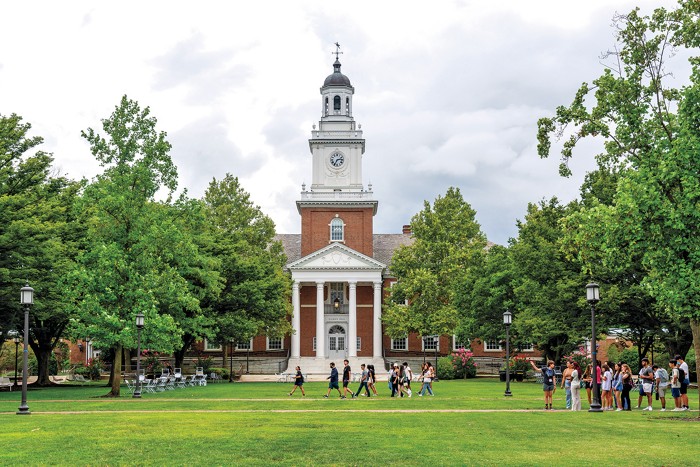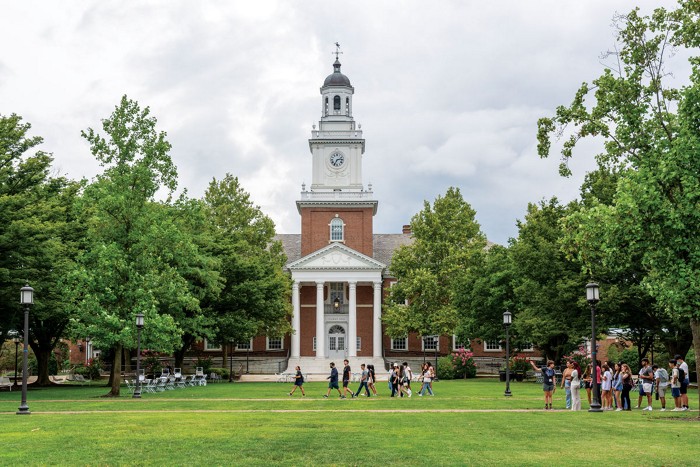Advertisement
Grab your lab coat. Let's get started
Welcome!
Welcome!
Create an account below to get 6 C&EN articles per month, receive newsletters and more - all free.
It seems this is your first time logging in online. Please enter the following information to continue.
As an ACS member you automatically get access to this site. All we need is few more details to create your reading experience.
Not you? Sign in with a different account.
Not you? Sign in with a different account.
ERROR 1
ERROR 1
ERROR 2
ERROR 2
ERROR 2
ERROR 2
ERROR 2
Password and Confirm password must match.
If you have an ACS member number, please enter it here so we can link this account to your membership. (optional)
ERROR 2
ACS values your privacy. By submitting your information, you are gaining access to C&EN and subscribing to our weekly newsletter. We use the information you provide to make your reading experience better, and we will never sell your data to third party members.
Research Funding
Editorial: Lessons for research from the economics of sports
by C&EN editorial staff
July 12, 2024
| A version of this story appeared in
Volume 102, Issue 21

The 2024 Olympics, which will begin later this month in Paris, offer more than pageantry. They are also a reminder that economic systems can change. Olympians were once required to be amateurs, forbidden from being paid for their work. Now the world’s best swimmers, runners, and gymnasts, among other top athletes, are allowed to earn money for their performance and endorsements.
In recent years, a similar change has happened for college athletes in the US. They have become eligible to earn money for advertising and other services. And under a recent legal settlement, the National Collegiate Athletic Association has reportedly agreed to allow schools to pay athletes directly for the first time in 2025.
It may seem that the amount of money earned and spent at the highest levels of sports, because of revenue from broadcast rights and ticket sales, would far exceed research budgets. But it doesn’t. In 2023, global research funding from government agencies and private foundations was well over $100 billion, according to Clarivate.
And according to Harvard University’s financial reporting, in 2023, Harvard brought in about $1 billion in research funding alone. That’s roughly equal to the yearly revenue of the most valuable sports team in the world—the Dallas Cowboys—and about one-sixth of the university’s overall revenue.
Research and sports aren’t exactly an apples-to-apples comparison because, for one thing, the incomes of the people providing the most visible labor are vastly different. But both the scale of money and the mobility of talent involved bear further reflection.
Changes in the economic models of Olympic and college sports were once inconceivable but could point toward a potential for disruption in how money is earned by and distributed to labor in other sectors—including research.
Some professional athletes in the US and elsewhere make tens of millions of dollars per season, and teams keep competing to sign players to such massive contracts. The potential value of a scientist who can significantly affect the world is huge—and profit can certainly factor in. As just one example, the monetary and societal value of Nobelist Katalin Karikó’s work on messenger RNA is at least in the same range as the entertainment potential of a soccer star.
The challenge is to reconsider how scientists are paid and how that can better parallel the societal impact and economic value of people’s contributions to basic and applied research. Unionization and other recent collective bargaining efforts have increased earnings in some cases. Nonetheless, a career in academia or industrial R&D is less attractive than it could be.
Additionally, the norms of academia discourage and can even penalize movement from one institution to another. The system could certainly be friendlier to people who want to move to earn more money or for other reasons. This is where sports offer a particularly intriguing model.
This year FC Barcelona, the professional soccer team that 17-year-old Spanish star Lamine Yamal plays for, was reportedly offered more than $200 million to transfer him to a new team. That’s on top of any salary Yamal would be paid.
Perhaps the National University of Singapore could earn a transfer fee for sending a synthesis star to the California Institute of Technology. If academia and research were to reenvision the third rail of academic funding—university overhead—they could free up money for an economic revolution resembling what’s happened in some sports.
Science is very much a team endeavor, but in both research and sports, the marginal value a top performer adds can be exceptionally useful. With this imagining, principal investigators could become recognized as the equivalent of both a sports team’s front office and its coach.
Focusing on stars too much could leave others behind, which is already one of science’s problems. But it can still be useful to look for new ways to share the wealth.
This editorial is the result of collective deliberation in C&EN. For this week’s editorial, the lead contributor is Chris Goski.
Views expressed on this page are not necessarily those of ACS.





Join the conversation
Contact the reporter
Submit a Letter to the Editor for publication
Engage with us on Twitter